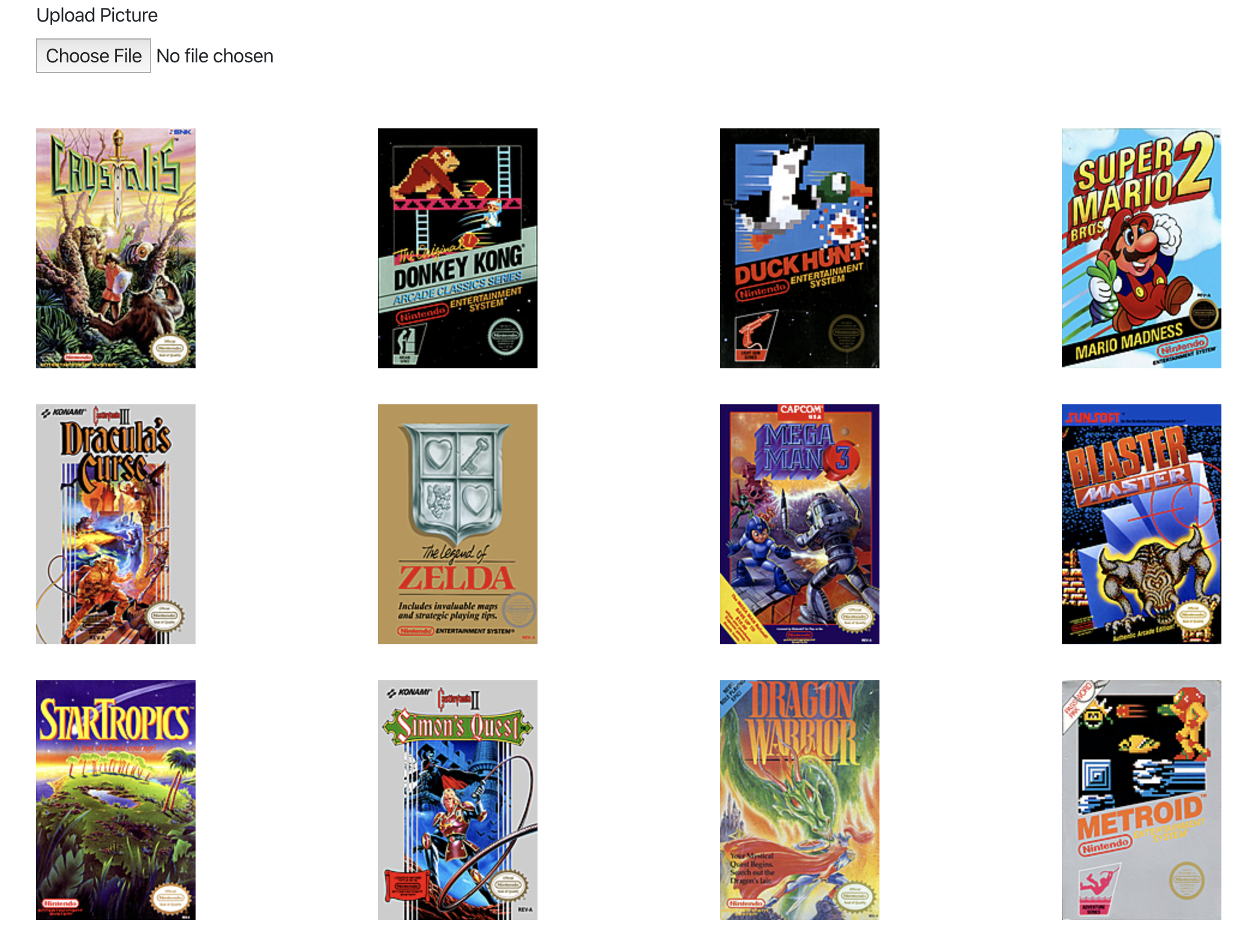Rails 6 and React integration with Active Storage image file attachments
In this post, I’ll show how to integrate a Rails 6 API with a React component to upload file attachments to Active Storage.
Part 1: Rails API
Initial project setup
rvm current
# ruby-2.5.7@rails6-active-storage-react
# create new rails project with a postgresql database
rails new . --api -d postgresql
# create and migrate the database
rake db:create && rake db:migrateI added additional gems to the Gemfile
gem 'rack-cors'
gem 'image_processing'
group :development, :test do
gem 'factory_bot_rails'
gem 'pry'
gem 'rspec-rails'
end
group :test do
gem 'database_cleaner-active_record'
endInstall the gems via: bundle install
I added a basic CORS configuration to the file: config/initializers/cors.rb. This allows the React frontend to make API requests.
Rails.application.config.middleware.insert_before 0, Rack::Cors do
allow do
origins %w[localhost:3001]
resource '*',
headers: :any,
methods: %i[get post put patch delete options head]
end
endI executed rails active_storage:install and rake db:migrate to create the necessary database migrations for Active Storage.
I added a migration to create a pictures table, and executed rake db:migrate.
class CreatePictures < ActiveRecord::Migration[6.0]
def change
create_table :pictures do |t|
t.timestamps
end
end
endI added the Picture model (file: app/models/picture.rb). The model implements methods for JSON serialization and defines a single Active Storage attachment. The JSON contains an attachment_url with a resized [200, 200] variant.
class Picture < ApplicationRecord
include ActiveModel::Serializers::JSON
has_one_attached :attachment
def attributes
{
'id' => nil,
'updated_at' => nil,
'created_at' => nil,
'attachment_url' => nil
}
end
def attachment_url
Rails.application.routes.url_helpers.rails_representation_url(
attachment.variant(resize_to_limit: [200, 200]).processed, only_path: true
)
end
endThe controller (file: app/controllers/pictures_controller.rb) implements the index and create methods.
class PicturesController < ApplicationController
def index
render json: Picture.all.with_attached_attachment.order(id: :desc)
end
def create
picture = Picture.new(picture_params)
if picture.save
render json: picture, status: :created
else
render json: picture.errors, status: :unprocessable_entity
end
end
private
def picture_params
params.require(:picture).permit(:attachment)
end
endLast I added the picture controller routes to the file: config/routes.rb
Rails.application.routes.draw do
resources :pictures, only: %i[create index]
endPart 2: Testing
From the console I entered a directory containing test images to upload.
# upload all the images using curl
ls -1 | xargs -I{} curl -X POST -F "picture[attachment]=@./{}" http://localhost:3000/pictures
# fetching images from the index route
curl http://localhost:3000/pictures 2>/dev/null | jq '.[0]'
{
"id": 68,
"updated_at": "2020-02-15T13:15:24.465Z",
"created_at": "2020-02-15T13:15:24.449Z",
"attachment_url": "/rails/active_storage/representations/eyJfcmFpbHMiOnsibWVzc2FnZSI6IkJBaHBTUT09IiwiZXhwIjpudWxsLCJwdXIiOiJibG9iX2lkIn19--6229a61847a498801a17c0f72e5528239fcbc1ec/eyJfcmFpbHMiOnsibWVzc2FnZSI6IkJBaDdCam9VY21WemFYcGxYM1J2WDJ4cGJXbDBXd2RwQWNocEFjZz0iLCJleHAiOm51bGwsInB1ciI6InZhcmlhdGlvbiJ9fQ==--9747cbda9b013ecaed6d2f3f5323a132d671fc88/yM55sxm.jpg"
}Next I setup RSpec for unit tests. I executed rails generate rspec:install to generate the configuration files.
I added a DatabaseCleaner strategy and included FactoryBot methods in the file: spec/rails_helper.rb
ENV['RAILS_ENV'] = 'test'
RSpec.configure do |config|
# ...snip...
config.before(:suite) do
DatabaseCleaner.strategy = :transaction
DatabaseCleaner.clean_with(:truncation)
end
config.around(:each) do |example|
DatabaseCleaner.cleaning do
example.run
end
end
config.include FactoryBot::Syntax::Methods
endI added a FactoryBot factory for the picture model, file: spec/factories/pictures.rb, and copied the Rails logo into spec/fixtures/files/
FactoryBot.define do
factory :picture do
created_at { DateTime.now }
updated_at { DateTime.now }
trait :with_attachment do
after :build do |picture|
file_name = 'rails-logo.png'
file_path = Rails.root.join('spec', 'fixtures', 'files', file_name)
picture.attachment.attach(io: File.open(file_path), filename: file_name, content_type: 'image/png')
end
end
end
endHere is a sample controller test, file: spec/controllers/pictures_controller_spec.rb
require 'rails_helper'
RSpec.describe PicturesController, type: :controller do
describe 'GET #index' do
let!(:picture) { create(:picture, :with_attachment) }
it 'is successful' do
get :index
expect(response).to be_successful
response_body = JSON.parse(response.body)
expect(response_body[0]['attachment_url']).to be_present
end
end
describe 'POST #create' do
let(:file_upload) { fixture_file_upload(file_fixture('rails-logo.png'), 'image/png') }
it 'is successful' do
post :create, params: { picture: { attachment: file_upload } }
expect(response.status).to eq(201)
end
end
endI executed rspec to ensure the tests run successfully.
Part 3: React front end
I created a new React project.
# set nodejs version using NVM
nvm use v12.15.0
# create react app
npx create-react-app .
# define nodejs version
nvm current > .nvmrc
# add bootstrap library for layout
npm install react-bootstrap bootstrapI included the bootstrap CSS, file: src/index.js
import React from 'react'
import ReactDOM from 'react-dom'
import './index.css'
import App from './App'
import * as serviceWorker from './serviceWorker'
import 'bootstrap/dist/css/bootstrap.min.css'
ReactDOM.render(<App />, document.getElementById('root'))
// If you want your app to work offline and load faster, you can change
// unregister() to register() below. Note this comes with some pitfalls.
// Learn more about service workers: https://bit.ly/CRA-PWA
serviceWorker.unregister()I added a constants file to define the API host URL, new file: src/constants.js
export const ApiHost = 'http://localhost:3000'I revised the main App component to include my the Pictures component, file: src/App.js
import React from 'react'
import Pictures from './Pictures'
import './App.css'
function App() {
return (
<div className="container">
<Pictures></Pictures>
</div>
)
}
export default AppI created a basic Pictures component (file: src/Pictures.js). On mount, is loads the existing pictures from the API and renders them in a defined number of columns. It also provides a file input which submits (on change) to create a new picture via the API.
import React from 'react'
import { ApiHost } from './constants'
class Pictures extends React.Component {
constructor(props) {
super(props)
this.state = {
pictures: [],
number_columns: 4,
loading: true,
}
this.handleFileInputChange = this.handleFileInputChange.bind(this)
this.loadPictures = this.loadPictures.bind(this)
}
render() {
if (this.state.loading) return null
return(
<div className="pictures_container">
<div className="row">
<div className="col">
<form>
<div className="form-group">
<label htmlFor="file_upload">Upload Picture</label>
<input type="file" className="form-control-file" id="file_upload" onChange={this.handleFileInputChange} />
</div>
</form>
</div>
</div>
{this.pictureRows().map((pictureRow, rowIndex) =>
<div key={`picture_row_${rowIndex}`} className="row">
{pictureRow.map((picture, columnIndex) =>
<div key={`picture_row_${rowIndex}_col_${columnIndex}`} className="col-sm-3">
<img data-id={picture.id} src={`${ApiHost}${picture.attachment_url}`} />
</div>
)}
</div>
)}
</div>
)
}
componentDidMount() {
this.loadPictures()
}
loadPictures() {
fetch(`${ApiHost}/pictures.json`)
.then((response) => response.json())
.then((pictures) =>
this.setState({
pictures: pictures,
loading: false
})
)
}
handleFileInputChange(event) {
let body = new FormData()
body.append('picture[attachment]', event.target.files[0] )
fetch(
`${ApiHost}/pictures.json`,
{
method: 'post',
body: body
}
)
.then((response) => response.json())
.then((picture) => {
let pictures = this.state.pictures
pictures.unshift(picture)
this.setState({
pictures: pictures
})
})
}
pictureRows() {
let rows = []
let row = []
this.state.pictures.forEach((picture) => {
row.push(picture)
if (row.length === this.state.number_columns) {
rows.push(row)
row = []
}
})
if (row.length > 0) {
rows.push(row)
}
return rows
}
}
export default PicturesLast I added a bit of CSS to improve the pictures layout, file: src/App.css
.pictures_container img {
max-height: 100%;
max-width: 100%;
}
.pictures_container .row {
margin-bottom: 30px;
}The React front end can be started via: npm start.
A screenshot:
